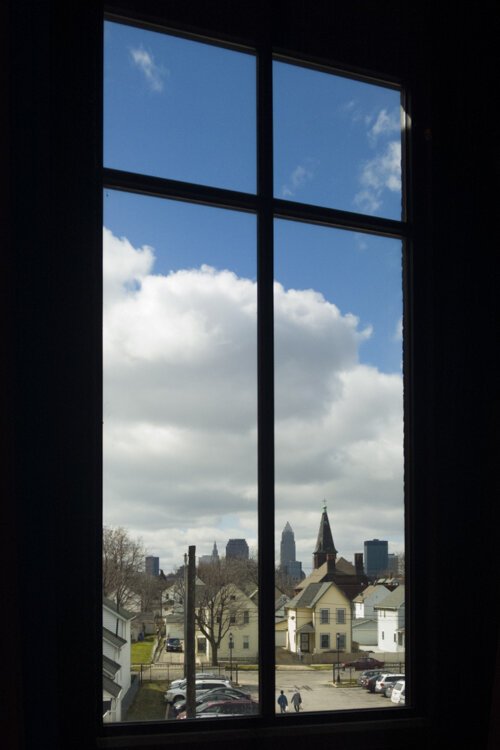What’s in a name? WRHS historian to examine origins of CLE neighborhood names at virtual event
Do you ever wonder where some of Cleveland’s neighborhoods got their names? John Grabowski, Western Reserve Historical Society (WRHS) Mueller historian, senior vice president of research and publications, and Case Western Reserve University professor of history, will get into the origins of neighborhood names in a virtual presentation this Thursday, March 25 at 6 p.m.
 Asia Town Neighborhood - Photo Bob PerkoskiGrabowski’s presentation, “Who Names the Neighborhood? A Question of Identity,” will explore the history of Cleveland’s neighborhoods by looking at their identities over time and the way name changes have been influenced by shifting demographics, politicians, developers, and urban planners.
Asia Town Neighborhood - Photo Bob PerkoskiGrabowski’s presentation, “Who Names the Neighborhood? A Question of Identity,” will explore the history of Cleveland’s neighborhoods by looking at their identities over time and the way name changes have been influenced by shifting demographics, politicians, developers, and urban planners.
Some neighborhood name origins are easy, says Grabowski, citing the name of neighborhoods like Hough, named after early landowners Oliver and Eliza Hough, or Kamm’s Corners, named after early settler Oswald Kamm. Glenville, where both branches of Dugway Brook come together from their trip down from the Heights to form glens throughout the neighborhood, is rooted in the area’s characteristics.
The Fairfax neighborhood, a "surrogate suburb," is named after Cleveland recreation department assistant director Florence Bundy Fairfax. While south of Public Square in parts of the Central neighborhood—once known as “Big Italy” or the Haymarket district—also became home to people who arrived by the Great Migration of Black families to the urban north.
Euclid was established after Moses Cleaveland offered the land to a group of surveyors for $1 an acre. “The surveyors had a difficult time because of the harsh conditions they were enduring,” Grabowski says. “They named the township after Euclid, the Greek mathematician and founder of geometry. In a sense [Euclid’s] work built the foundation for their profession.”
Some of Cleveland’s neighborhood names are more, say, unique. “Some of the names are really still difficult to fully pin down,” he admits.
There are newer names like Duck Island and Hingetown, where Grabowski says the name origins do not seem to have a connection to their origins. Hingetown emerged as its own district in Ohio City around 2013, while modern-day Duck Island developed around the same time.
“Duck Island is part of Ohio City, but it may have gotten its name because there were bootleggers around and they would ‘duck’ when the police came to town.” But, he admits, the origins of the name are a bit hazy.
 Grabowski says Duck Island was not always the neighborhood hot spot, recalling Haab’s Bakery on Abbe Road and West 19th Street. “
Grabowski says Duck Island was not always the neighborhood hot spot, recalling Haab’s Bakery on Abbe Road and West 19th Street. “
The same could be said of neighborhoods like Tremont and Little Italy, Grabowski says, citing the renaissance Tremont has seen and the current development happening in Little Italy.
“Little Italy is a fascinating place and it’s really changing rapidly—and there’s some pushback from some of the old timers,” he says. “Twenty to 30 years ago, it was affordable, if you knew someone you could buy a house from.”
Following the trends of Little Italy, Slavic Village got its name in the 1970s, Grabowski says, in large part, to create an area that would attract visitors.
Even popular and trendy Tremont has had various names in its history. It was originally part of Brooklyn Township in 1836. Then, when Cleveland University was founded in 1851, the neighborhood was dubbed “Cleveland Heights.” The school is why the neighborhood has streets names like Professor, Literary, and University.
The neighborhood was also known as University Heights, Lincoln Heights, and The South Side, before the name Tremont stuck in the 1970s.
 “Nobody votes on the name of a neighborhood,” says Grabowski of the unique names.
“Nobody votes on the name of a neighborhood,” says Grabowski of the unique names.
Grabowski will also talk about “the lines on a map” and how these neighborhoods were delineated. Cleveland was one of the first cities to use census tracts. “Howard Whipple Green utilized them in the 1930s to define settlement patterns and housing values,” he explains. “Eventually data such as this played a part in red-lining neighborhoods.”
Tickets to “Who Names the Neighborhood?” are $15, $10 for WRHS members. Guests will receive the link when they register for the Zoom event, which will be from 6 p.m. to 7 p.m. on Thursday, March 25.





